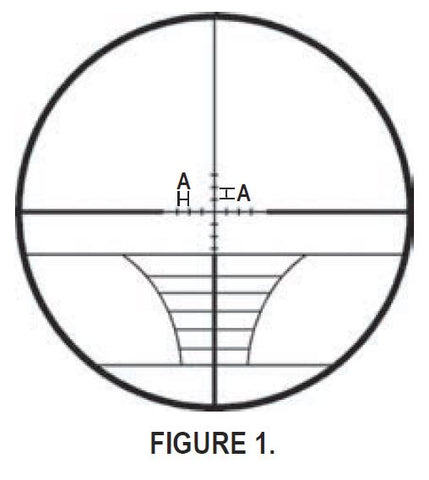A Rangefinder Reticle contains either two or more horizontal lines placed at given distances away from each other or a horizontal line that is a certain thickness. The distance between the lines, or the line thickness, when placed against an object of known size, such as a game animal, will closely approximate the distance from the shooter to the target. The shooter then uses the lines to properly adjust the point of aim so as to align the point of aim with the intended point of impact.
DETERMINING RANGE USING RANGE FORMULA

the moment you look at the target. As an example, an 8-32x50
scope can have magnifications from 8x to 32x. At a setting of 8x,
you have Power = 8.
2. In addition, you need to know the actual target size. For
example, a deer that is 4 feet tall fits into 4 increments of "A" in
the reticle (See Fig. 1). That means each increment of "A" is 1
foot long at the target. So, you have A=12" (it must be in inches).
3. Here is the formula to use to calculate Range:
Power x A (inches) x 2.5 = Range (yards)
So, in the example, 8 x12 x 2.5 = 240 yards.
Therefore your target is 240 yards away.
DETERMINING RANGE USING MINUTE OF ANGLE (MOA)
- The vertical line of the reticle is divided into 2 MOA increments (approx. 2" @ 100yds). These vertical increments are used for range estimation, multiple zero points and accurate bullet drop compensation.
- Any size target can be easily ranged using a simple formula:
- Target Size In Inches MOA x 100 = Range In Yards
- For example:
- The target is 18" high and the target's height measures 6 MOA. The range to the target is 300 yards (18" 6 MOA x 100 = 300 yards).
- Once the range is determined select an appropriate hold point based on the bullet drop of your cartridge. The vertical spacings can easily be split into 1 MOA increments further enhancing long range accuracy.


